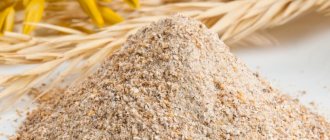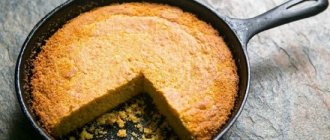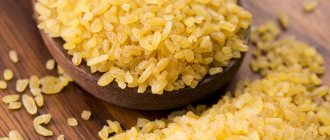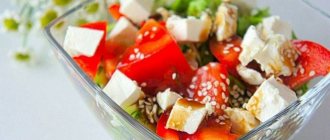Bread is produced by baking, frying dough or steaming. The basis of this product must contain two ingredients - flour and water, the rest is optional and depending on the recipe. More often than other products, salt, yeast or baking powder are also added to bread. The flour used to make the dough is typically made from wheat, rye, corn and barley.
Bread can be consumed either separately or as part of a sandwich, topped with oils, jams, honey, etc.
The history of this product goes back several thousand years. In the early Neolithic, it looked like a baked mush of cereal and water. In some cultures, this method of making bread is still relevant today.
Bread based on yeast dough was first prepared in Egypt, where it was possible to develop a special type of wheat that does not require pre-drying and frying and contains gluten in the required quantity.
The variety of types of bread was amazing even in ancient times. Thus, Athenaeus, an author from Ancient Greece, in his works described flat cakes, loaves, bread curls and other types of product.
In the Middle Ages in Europe, bread was not only part of the diet, but also an element of table setting. For example, standard serving meant serving a small piece of stale bread, which served as a plate. After eating, it was customary to eat them.
In all countries, white varieties of bread were the prerogative of the rich segments of the population, while the poor were content with rye bread. Only in the 20th century did preferences change completely, as priorities also changed: wealthy people looked after their health and chose black, healthier bread; the poor only needed to get nutrients and satisfy their hunger, which is why their choice fell on white.
Today, the variety of varieties of this flour product is impressive. In each country, one or another variety is considered traditional:
- for Russia, Ukraine and Belarus - a loaf;
- for the USA - bagel;
- for Germany - pretzel;
- for France - brioche or baguette;
- in Italy - ciabatta;
- in Israel - matzah, etc.
Composition, nutritional value and calorie content of bread
Bread, especially fresh bread, contains a huge list of vitamins. First of all, these are B vitamins, of which it contains in abundance: B9, B6, B2, B5, B1. In addition, the composition of the bread is enriched with choline, beta-carotene and vitamins PP, E, H, A. Along with this, the list of minerals contained in bread is surprisingly extensive: cobalt, chromium, molybdenum, manganese, iodine, copper, iron, zinc, sulfur, chlorine, potassium, phosphorus, magnesium, sodium, calcium - almost the entire useful part of the periodic table.
The calorie content of bread varies and directly depends on the composition. Thus, the calorie content of rye bread is 181 Kcal per 100 g. The ratio of proteins, carbohydrates and fats is: 6.6 g, 34.2 g and 1.2 g, respectively. Light wheat bread has the highest calorie content - about 381 Kcal per 100 g. Nutritional value of this variety: 9.2 g of proteins, 5.2 g of fat, 78.3 g of carbohydrates.
Chemical composition and nutritional value of bread and bakery products
Commodity characteristics and examination of the quality of bread and bakery products Read more: Classification and assortment of bread and bakery products
1. Chemical composition and nutritional value of bread and bakery products
The nutritional value of bread and bakery products is determined by many factors.
The content of nutrients in bread (proteins, carbohydrates, fats, vitamins, etc.) depends on the type, type of flour and additives used. The amount of carbohydrates in the most common types of bread is 40.1-50.1% (80% is starch), protein - 4.7-8.3, fat - 0.6-1.3, water - 47.5% . When various fortifiers (fat, sugar, milk, etc.) are added to bread, the content of the above substances increases depending on the type of additive [7].
Products made from wheat flour contain more protein than products made from rye flour. For one part of proteins in bread there are approximately up to eight parts of carbohydrates, which is clearly not enough in terms of the quantitative content of protein substances. The most rational ratio of proteins, fats and carbohydrates in food is 1: 1: 5.
Table 1 Average chemical composition of bread
| Bread | Moisture | Fat | Protein | Cellulose | Ash | Sugar | Starch | ||
| Premium wheat | 35,8 | 0,39 | 17,00 | 0,33 | 1,67 | 0,62 | 79,50 | ||
| From wallpaper wheat. flour | 42,1 | 0,94 | 20,71 | 0,98 | 2,38 | 1,23 | 73,12 | ||
| Rye peklev. | 43,8 | 0,39 | 11,72 | 0,99 | 2,55 | 1,12 | 82,69 | ||
| Rye Intend. | 40,6 | 1,10 | 13,88 | 2,44 | 2,19 | 2,10 | 75,06 | ||
Through bread, the human body satisfies 50% of its need for B vitamins: thiamine (B1), riboflavin (B2) and nicotinic acid (PP). The presence of vitamins in bread is mainly determined by the type of flour. When grinding grain into flour, up to 65% of vitamins are lost, and the higher the grade of flour, the more. Bread made from wallpaper flour is characterized by a higher content of vitamins.
Table 2 Average content of vitamins in bread made from different types of flour (in mg per 100 g of product)
| Bread | IN 1 | AT 2 | RR |
| Rye from wallpaper flour | 0,15 | 0,13 | 0,45 |
| Wheat flour 100% yield | 0,26 | 0,12 | 3,10 |
| Wheat flour 85% yield | 0,20 | 0,08 | 1,60 |
| Wheat flour loaves 72% yield | 0,10 | 0,07 | 0,67 |
| City rolls made from flour 72% yield | 0,12 | 0,10 | 0,70 |
Bread is also important as a source of minerals. Bread contains potassium, phosphorus, sulfur, magnesium; in slightly smaller quantities - chlorine, calcium, sodium, silicon and other elements in small quantities. Bread made from lower grades of flour contains more minerals.
The biological value of bread is characterized by its amino acid composition, content of ash elements, vitamins and polyunsaturated fatty acids. Bread proteins are biologically complete. However, in terms of the content of essential amino acids such as lysine, methionine and tryptophan, bread proteins are inferior to those of milk, eggs, meat and fish. The deficiency of these amino acids is greater in bread made from wheat flour than in bread made from rye flour. The proteins of bread made from lower grades of flour (wallpaper) are more complete than from higher grades. The digestibility of bread depends on the type, grade of flour and its quality. Bread made from wheat flour is better digestible than bread made from rye flour of the same type. The digestibility of proteins, fats and carbohydrates is higher in bread made from higher grades of flour and, accordingly, for products made from premium wheat flour it is 87.95 and 98%, and from wallpaper flour - 70.92 and 94%. Bread with good, uniform, thin-walled porosity, elastic, in which all substances are in the most favorable state for the action of enzymes (proteins are denatured, starch is gelatinized, sugars are dissolved), is easily saturated with digestive juices, is well digested and absorbed.
The energy value of bread is determined by the peculiarities of its chemical composition and depends on the type, type of flour and recipe. The energy value of wheat bread is higher than the corresponding variety of rye bread. As the grade of flour increases, the amount of energy released increases. Bread varieties, where the recipe provides for the addition of various nutrients, are characterized by a higher energy value. Thus, the energy value of 100 g of bread made from wheat flour is 849 kJ, from premium wheat flour - 975, from sifted rye flour - 895, improved bread - up to 1,100, butter products - up to 1450 kJ.
Table 3 Coverage of a person’s daily needs for individual minerals when consuming 500 g of bread
| Bread | Coverage of demand (in%) in | |||
| Ca | R | Mg | Fe | |
| Molded from rye wallpaper flour | 20,0 | 56,3 | 49,3 | 70,0 |
| Molded from wheat wallpaper flour | 16,9 | 60,6 | 48,6 | 70,0 |
| Formed from wheat flour 2 grades | 15,0 | 51,2 | 31,4 | 56,7 |
| Molded from 1st grade wheat flour | 12,5 | 30,9 | 21,4 | 46,7 |
| Long loaves made from 1st grade wheat flour | 13,1 | 32,5 | 22,8 | 50,0 |
| City buns made from 1st grade wheat flour | 13,1 | 32,1 | 22,1 | 50,0 |
The organoleptic value of bread depends on its appearance, the state of the crumb, taste, aroma and largely determines its nutritional value. Bread that is properly baked, from well-cooked dough, of the correct shape, with a well-colored, browned crust is better digestible. The taste and aroma of bread is determined by the content of organic acids, alcohols, esters, aldehydes and other substances that accumulate during the fermentation of dough and during baking. The amount of flavoring and aromatic substances mainly depends on the type and type of flour, recipe, characteristics of dough preparation, the addition of various additives and the duration of baking [8].
The physiological significance of bread lies in the fact that it gives the entire mass of food consumed a favorable consistency, promotes wettability with digestive juices and better functioning of the digestive tract.
The nutritional value of bread and bakery products is currently being increased in four directions:
— creation of methods for producing bread from whole grains; the production of finely dispersed flour from whole wheat grains and its use in bread baking will enrich bread with natural vitamins and minerals;
- use of various healthy food additives; Dairy products (natural and powdered milk, buttermilk and whey) are widely used as fortifiers in the baking industry; soybean and pea flour are promising protein fortifiers;
— obtaining fundamentally new bread products from non-traditional raw materials for baking production (using potato, corn starch and other products);
— creation of specialized dietary products with a predetermined nutritional value and a certain chemical composition for people suffering from various diseases. [8]
Commodity characteristics and examination of the quality of bread and bakery products Read more: Classification and assortment of bread and bakery products
Information about the work “Commodity characteristics and examination of the quality of bread and bakery products”
Section: Cooking Number of characters with spaces: 59397 Number of tables: 7 Number of images: 0
Similar works
Commodity characteristics of bread and bakery products
65961
4
1
..., which prevents molding of bread and increases shelf life. 2. PRACTICAL PART 2.1 Requirements of standards for the product in question and methods of conducting commodity examination Bread and bakery products are food products, the consumption of which significantly affects the functioning of the body. Therefore, ensuring food safety for life and health...
Bread quality examination
32876
5
0
… . By agreement with the consumer, the amount of labeling information may be reduced. Information data is indicated in Russian and Bashkir languages. The actual labeling is presented in Appendix B. 2 Examination of the quality of bread made from wheat flour 2.1 Sampling GOST 5667 - 65 To control organoleptic and physico-chemical indicators, samples are taken from a representative ...
Commodity examination of bakery products
51193
7
2

...% of the installed net weight of one product. The deviation of the net weight of products on the larger side is not limited[9]. 6. SAMPLING AND QUALITY EXAMINATION The quality of the finished products of a bakery enterprise is judged by the analysis of selected average samples of finished bakery products. The quality of products is judged by indicators determined by organoleptic and physico-chemical methods, ...
Commodity characteristics of wheat and rye flour
46577
4
2

... flour with low baking properties, for example, flour with low gluten content and low quality.[20] 5. Packaging, labeling, storage of wheat and rye flour 5.1 Flour packaging Flour packaging - according to GOST 26791-89 regulates the requirements for packaging wheat and rye flour [21]: Packaged in consumer containers with a net weight in kilograms: 1,000; 2,000 and 3,000 - for flour; ...
Useful properties of bread
It is impossible to say that the benefits of bread do not differ from variety to variety. The components included in the product determine not only its calorie content, but also the beneficial qualities that the bread contains. In white bread, the content of nutrients is reduced to a minimum. It is believed that during the processing of grain that is necessary for the production of premium flour, most of the nutrients contained in the grain shell are lost. Such bread is usually soft and fluffy, but its composition is replete with starch and extra calories. The benefits of this type of bread are minimal, because... the percentage of nutrients in it is unlikely to be higher than 30% of the original.
However, this does not mean at all that you should refuse bread on the table. The main thing is to choose the right type of bakery product. One of the most healthy types of bread is rightfully considered “gray”, with the addition of rye flour. It is digested more slowly and contains more minerals and vitamins than its white counterpart; it is to a greater extent that the beneficial properties of bread are inherent in it.
An ideal option for lovers of baked goods is bread with bran. The benefits of bran bread come from its ability to absorb allergens and toxins, strengthen the immune system, and provide the body with much-needed fiber, protein, and vitamins. It has been proven that regular consumption of bread containing bran helps reduce the incidence of gastrointestinal diseases and atherosclerosis. In addition, those who prefer bran bread to white bread are less likely to experience problems associated with excess weight. Nutritionists recommend consuming this type of bread for patients with hypertension, as well as for constipation, cholelithiasis, and obesity.
Yeast-free bread with hop sourdough, which is gaining popularity, has a number of useful qualities: it has a mild sleeping pill, as well as choleretic, anti-inflammatory and expectorant effects. Consuming this product increases appetite and helps normalize the menstrual cycle in women.
Energy value of bread
Bread contains not only calories that are harmful to your figure, but also a complex of valuable vitamins and minerals.
The nutritional value of the main types of bread has the following indicators. Black bread has:
- vitamin A,
- B vitamins,
- vitamin E.
https://www.youtube.com/watch?v=CMoTVERJygg
Proteins, fats and carbohydrates determine the value of 100 grams. product as follows: 6.9 g., 1.0 g., 40.9 g. respectively. Consumption of baked goods will have a beneficial effect on the condition of hair, skin and nails, and will also slow down oxidative processes in the body.
White bread is rich in:
- B vitamins,
- vitamin PP,
- calcium,
- iron,
- phosphorus.
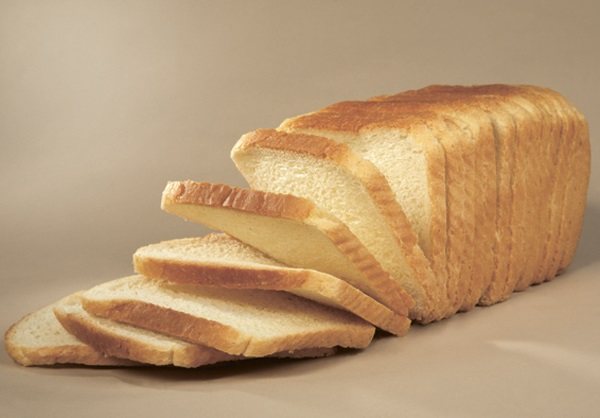
Nutritional benefits are expressed by proteins, fats and carbohydrates per 100 grams. product: 8.2 g., 2.1 g., 50.1 g. respectively. This product contains a lot of protein, which is useful for losing weight. Bread helps fight anemia, improves the condition of hair, teeth, and nails.
Rye bread boasts:
- vitamin A,
- B vitamins,
- vitamin E,
- vitamin PP,
- iodine,
- zinc,
- manganese,
- calcium,
- iron.
Value 100 gr. product (proteins, fats and carbohydrates) is: 6.6 g, 1.2 g, 33.4 g. respectively. The vitamins and minerals contained allow you to maintain basic body functions and also improve immunity.
Wheat bread is rich in:
- B vitamins,
- vitamin E,
- vitamin PP,
- calcium,
- zinc,
- phosphorus,
- copper.
Nutritional value per 100 g. product in proteins, fats and carbohydrates is determined as follows: 8.1 g., 1.1 g., 48.8 g. respectively. This flour product contains the fiber necessary for the body. The vitamins and minerals contained improve the condition of nails, teeth, and bones.
Bran bread is rich in:
- B vitamins,
- vitamin E,
- vitamin PP,
- iron,
- phosphorus,
- zinc
Value 100 gr. product (proteins, fats and carbohydrates) is correlated as: 7.6 g., 1.3 g., 45.2 g. respectively. This product effectively removes toxins from the body and also maintains the required level of cholesterol in the blood.
Bread with seeds contains:
- B vitamins,
- vitamin E,
- vitamin PP,
- potassium,
- magnesium,
- calcium,
- choline
Nutritional value per 100 g. product is expressed in proteins, fats and carbohydrates: 10.4 g, 10.0 g, 43.3 g. respectively. A very nutritious type of baked product, it helps the body function properly and improves immunity. The most high-calorie bread, which should not be abused.
Yeast-free bread is useful:
- B vitamins,
- vitamin PP,
- magnesium,
- phosphorus.
In proteins, fats and carbohydrates the benefits of 100 g. product is correlated as: 5.7 g., 0.5 g., 37.5 g. This flour product has a beneficial effect on digestion due to the absence of yeast and rough texture. It is good to eat such bread for endocrinological diseases.
Cornbread is rich in:
- vitamin A,
- B vitamins,
- vitamin C,
- potassium,
- sodium,
- calcium,
- magnesium,
- phosphorus.
Nutritional value in proteins, fats and carbohydrates per 100 g. product is determined as follows: 6.7 g., 7.1 g., 43.5 g. respectively. This bakery product is useful for heart diseases and metabolic disorders.
Toast bread is valuable:
- B vitamins,
- vitamin E,
- choline,
- phosphorus,
- potassium,
- magnesium,
- sodium,
- selenium
We invite you to familiarize yourself with the Diet for blood type 1 positive: table of products for weight loss for women, menu
In proteins, fats and carbohydrates, the value is 100 grams. product is correlated as: 7.3 g., 7.0 g., 52.5 g. This flour product should be consumed in limited quantities due to its high sugar content, and therefore high calorie content.
At the moment, there are about 100 varieties of baked goods, which can be roughly divided into white and black bread. You can make different variations of each to change the taste - make crispy baguettes or dried crackers. The calorie content also changes depending on the cooking method.
A standard Family loaf contains 900 g of product. On average, its calorie content is 270-310 kcal per 100 grams, respectively, a loaf is about 2 thousand kilocalories. 1 slice contains about 100 kcal - this is an insignificant caloric value, so you can consume the product regardless of your desire to maintain your figure.
A loaf is a type of white bread, for the production of which a large amount of yeast and premium flour are used. The product turns out light and airy. White bread with the shape and structure of a loaf contains about 1100 kcal for a whole product weighing 400 grams.
It turns out that the calorie content of bread per 100 grams is 275 kcal. One piece of bread will contain about 100 kcal, but eating it will have a worse effect on your figure. Everything is explained by the yeast and the composition of the flour used for baking. If you want to enjoy white wheat bread, it is better to give preference to croutons or crackers.
White wheat
A loaf of white wheat bread contains only 600 grams and 1400 kilocalories. The energy value per 100 grams is about 300 kilocalories. The nutritional value increases in accordance with the flour used - coarse grinding provides greater energy value, but at the same time, it is better absorbed by the body, and the calories consumed are less processed into fat cells.
Rye
This bread is made from rye flour, so its calorie content is low. One loaf, for example, of Borodino bread contains only 700 g and about 200 kilocalories per 100 g of product.
With bran
The energy value of the product is only 250 kcal per 100 g of product. Despite the average calorie content, a bran product can boast a large number of beneficial properties:
- the content of bran helps remove waste and toxins from the body,
- the presence of bran helps neutralize toxins, which increases immunity,
- the body is additionally saturated with plant proteins.
Bran is contraindicated for people with stomach ulcers and intestinal diseases, so it is better for them to avoid this type of baked product. Doctors assure that 1 piece of such bread or crouton will not provoke an exacerbation of the existing pathology.
It is recommended to consume croutons from the presented product for citizens with diabetes mellitus, cholelithiasis, atherosclerosis, hypertension and obesity. The most famous rye bakery products include Darnitsky, which has several flavors in accordance with the manufacturer’s recipe used - it is either gray or dark brown.
We invite you to familiarize yourself with Diet calorie counter according to tables
Toast
Croutons are not used as often in Russia as abroad, but their benefits when eaten for breakfast are obvious. There are about 370 kilocalories per 100 g of product. You should not assume that croutons have more calories - during the process of cooking bread in a toaster, the product dries out, which means the weight of one piece decreases by about 2 times.
It should also be noted that to get a feeling of fullness, it will be enough to consume only 1 piece, while with fresh baked goods a larger amount is required. This is not a fried bread, so the calories will not increase during cooking.
The most complete list is presented in the table.
| BREAD | KCAL PER 100 G | KCAL PER 1 PIECE |
| White | 225 | ~40g, 90 |
| Black | 216 | ~40g, 87 |
| Grey | 280 | ~40g, 112 |
| Rye with butter | 297 | ~30g, 89 |
| Toast | 312 | ~15y, 47 |
| Brown bread crackers | 295 | ~10g, 30 |
| Bread | 320 | ~10g, 32 |
Harmful properties of bread
As noted above, the harm of bread lies in the excessive consumption of those varieties that contain extra calories, without being enriched with useful substances. Many nutritionists and doctors are of the opinion that the development of many diseases is triggered by the consumption of premium flour products in quantities several times higher than the norm.
Research shows that excessive consumption of such products causes exacerbation of cardiovascular, endocrine, gastrointestinal and cancer diseases. In addition, frequent inclusion of white bread in the diet increases the likelihood of diabetes several times. It is noted that the hereditary factor does not play a role in this case - the reason for the development and progression of the disease lies solely in the quality and quantity of food consumed.
Finally, the harm of bread when consumed daily is that the increased acidity characteristic of wheat has a detrimental effect on tooth enamel.
In other words, the harm of bread, as often happens, is not in the product itself, but in the lack of measures when consuming it.
